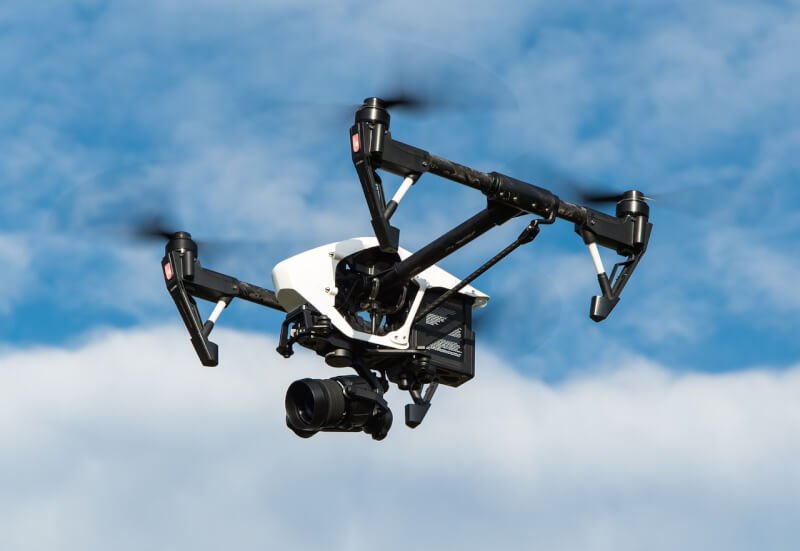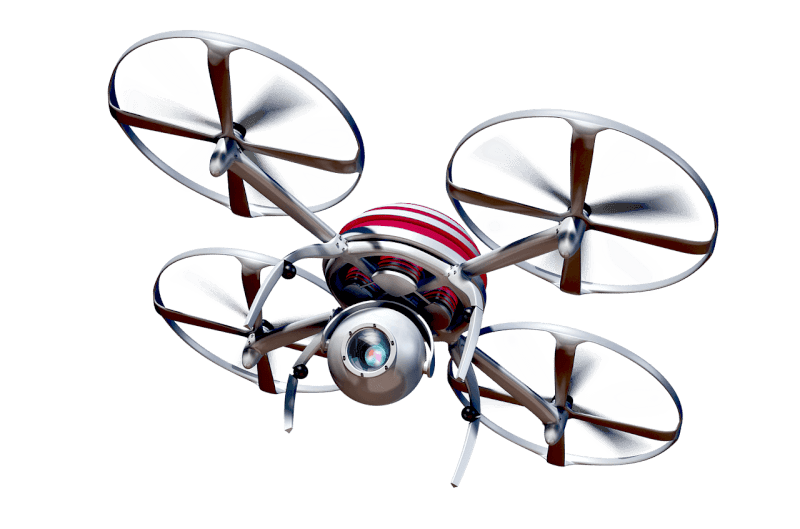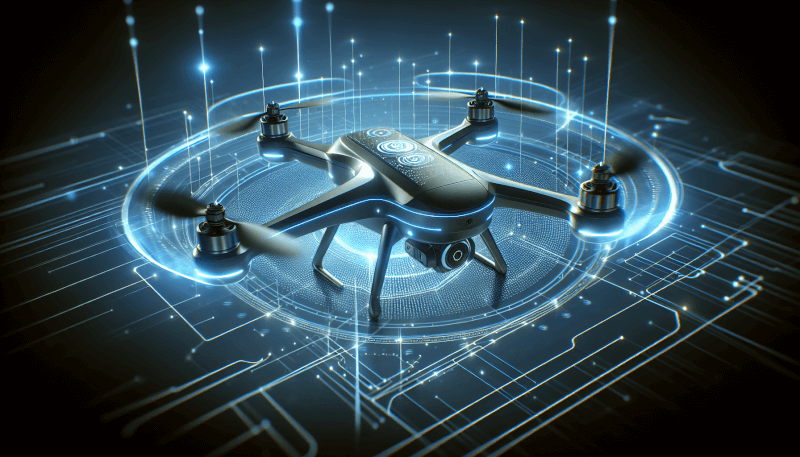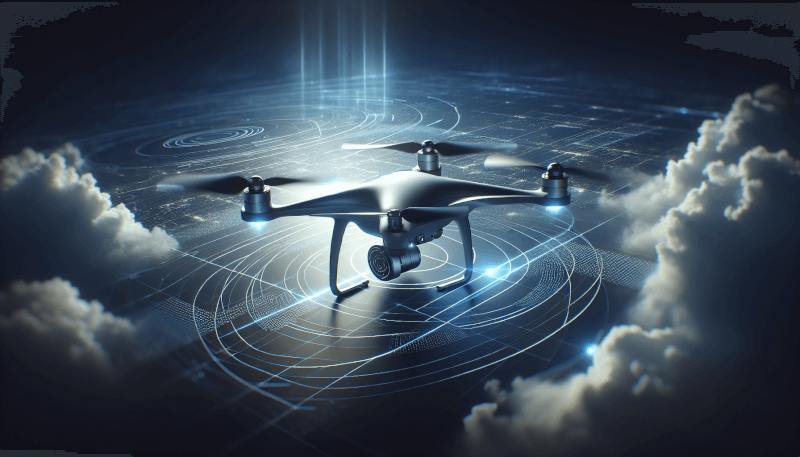When it comes to buying drones, there is no doubt that advanced obstacle detection and avoidance technology has become a game-changer. Gone are the days of worrying about your shiny new gadget crashing into a tree or a building. With the latest drones on the market equipped with this groundbreaking feature, you can take to the skies with confidence and peace of mind. In this buyer’s guide, we will explore the top drones that offer advanced obstacle detection and avoidance, highlighting their key features, benefits, and what sets them apart from the rest. Whether you’re a professional aerial photographer or a hobbyist looking to capture stunning footage, this guide is your go-to resource for finding the perfect drone that will navigate through any environment effortlessly.

What is obstacle detection and avoidance?
Definition of obstacle detection and avoidance
Obstacle detection and avoidance refers to the technology and systems implemented in drones to identify and navigate around objects in their flight path. These systems utilize various sensors and algorithms to detect obstacles such as buildings, trees, or other drones, and then calculate the necessary maneuvers to prevent collisions. By detecting and avoiding obstacles, drones are able to operate safely and autonomously in complex environments.
Importance of obstacle detection and avoidance in drones
Obstacle detection and avoidance play a crucial role in ensuring the safety of drone operations. Without proper detection and avoidance systems, drones would be prone to accidents and collisions, resulting in damage to property and potential harm to humans. Additionally, obstacle detection and avoidance enable drones to navigate efficiently and effectively, allowing them to perform tasks such as aerial photography, package delivery, and search and rescue operations with greater precision and reliability. Overall, the incorporation of advanced obstacle detection and avoidance systems enhances both the safety and performance of drones.
Types of obstacle detection and avoidance systems
Visual sensors
Visual sensors utilize cameras and computer vision algorithms to detect obstacles by analyzing the video feed captured by the drone’s cameras. These sensors can recognize objects and calculate their distance and trajectory, allowing the drone to react accordingly. Visual sensors are effective in various lighting conditions and are capable of detecting both static and moving objects.
Ultrasonic sensors
Ultrasonic sensors use sound waves to detect objects in the drone’s vicinity. These sensors emit ultrasonic waves and measure the time it takes for the waves to bounce back after hitting an object. Ultrasonic sensors are particularly useful for close-range obstacle detection, such as when drones are flying low or maneuvering in tight spaces.
Infrared sensors
Infrared sensors utilize infrared light to detect obstacles. These sensors emit infrared signals and measure the reflections to determine the presence and distance of obstacles. Infrared sensors are effective in low-light conditions and can detect objects that may not be visible to the human eye or other sensors.
Lidar sensors
Lidar (Light Detection and Ranging) sensors use laser beams to generate precise 3D maps of the drone’s surroundings. By measuring the time taken for laser pulses to return after bouncing off objects, lidar sensors can accurately determine distances and identify obstacles in real-time. Lidar sensors are particularly effective for outdoor environments where the drones need to detect and navigate around various terrain features.
Radar sensors
Radar sensors use radio waves to detect obstacles and calculate their position and velocity. These sensors are commonly used in aviation for obstacle detection and air traffic control. Radar sensors can provide long-range detection capabilities and are especially effective in detecting large objects or vehicles that may pose a risk to drone operations.
Factors to consider when buying a drone with advanced obstacle detection and avoidance
Range of detection
The range of detection refers to the maximum distance at which the drone’s obstacle detection system can identify objects. The wider the range of detection, the better equipped the drone is to detect obstacles early and navigate around them effectively. It is important to consider the intended use of the drone and ensure that the range of detection aligns with the operational requirements.
Accuracy of detection
The accuracy of detection refers to how reliably the drone’s obstacle detection system can identify and classify objects. High accuracy ensures that the drone can correctly identify obstacles and distinguish them from other elements in the environment, such as natural features or benign objects. This is crucial for avoiding unnecessary maneuvers or false alarms.
Response time
The response time refers to how quickly the drone can react and change its flight path after detecting an obstacle. A fast response time is essential for avoiding collisions, especially when the drone is flying at high speeds or encountering unexpected obstacles. It is important to choose a drone with a response time that meets the specific requirements of the intended application.
Number of sensors
The number of sensors determines the level of redundancy and coverage that the drone’s obstacle detection system can provide. A higher number of sensors allows for greater reliability and accuracy, as multiple sensors can cross-reference and validate obstacle detections. Additionally, having multiple sensors can compensate for limitations or blind spots in certain sensor types.
Sensor redundancy
Sensor redundancy refers to the inclusion of duplicate sensors or backup systems in case of sensor failure. Redundancy is important to ensure that the drone’s obstacle detection and avoidance capabilities are not compromised in the event of a sensor malfunction or damage. Some drones may feature redundant sensor systems that switch between primary and backup sensors automatically.
Integration with flight control system
The integration of the obstacle detection and avoidance system with the drone’s flight control system is crucial for seamless and effective operation. The obstacle detection system should be able to communicate and share information with the flight control system in real-time, allowing for immediate adjustments to flight paths and maneuvers. This integration ensures smooth coordination and enhances overall flight safety.
User customization options
User customization options refer to the flexibility and adaptability of the obstacle detection and avoidance system to meet specific user preferences or operational requirements. Some drones may offer settings or parameters that can be adjusted by the user, such as sensitivity levels, collision avoidance modes, or obstacle priority. These customization options allow users to tailor the drone’s obstacle detection system to their specific needs.
Battery life
The battery life of the drone directly impacts its flight time and operational efficiency. A longer battery life ensures extended flight durations, providing more time for obstacle detection and avoidance. It is important to consider the battery life in relation to the drone’s obstacle detection system to ensure sufficient power for continuous operation.
Price
Price is always a key consideration when purchasing any technology, including drones with advanced obstacle detection and avoidance. The cost of a drone with advanced obstacle detection and avoidance will vary depending on factors such as the brand, specifications, and included features. It is important to determine the budget and prioritize features based on the specific needs and use cases to find a balance between affordability and functionality.
Top drone models with advanced obstacle detection and avoidance
Model A
Model A is a highly regarded drone known for its advanced obstacle detection and avoidance capabilities. Equipped with a combination of visual sensors, lidar sensors, and radar sensors, it ensures comprehensive obstacle detection coverage. The drone features a wide range of detection, fast response time, and accurate detection, making it suitable for professional applications such as aerial photography and videography, as well as various industrial tasks.
Model B
Model B is a versatile drone that excels in obstacle detection and avoidance. It utilizes a combination of ultrasonic sensors, infrared sensors, and visual sensors to provide reliable and accurate detection. With a focus on user customization, the drone allows users to adjust obstacle detection settings and prioritize certain types of obstacles. Model B is an excellent choice for both beginners and professional operators, offering a balance between affordability and functionality.
Model C
Model C is a top-of-the-line drone designed specifically for advanced obstacle detection and avoidance. Featuring state-of-the-art lidar sensors, the drone offers exceptional accuracy and real-time mapping of the environment. The drone’s obstacle detection system is seamlessly integrated with its flight control system, ensuring precise and efficient navigation. Model C is favored by professional photographers, filmmakers, and industrial inspectors who require superior obstacle detection capabilities.
Model D
Model D is a compact and portable drone equipped with a combination of visual sensors, ultrasonic sensors, and radar sensors. Despite its small size, the drone offers impressive obstacle detection range and accuracy. Model D is popular among outdoor enthusiasts and hobbyists due to its durability and user-friendly interface. It is an ideal choice for recreational use while still providing reliable obstacle detection capabilities.
Model E
Model E is a high-end drone designed for professional applications that require advanced obstacle detection and avoidance. It incorporates advanced radar sensors and infrared sensors to provide reliable detection in various environmental conditions. The drone’s long-range detection and fast response time make it suitable for tasks such as infrastructure inspection or search and rescue operations. Model E is favored by professional operators who prioritize performance and precision.
Model F
Model F is a budget-friendly drone that offers advanced obstacle detection and avoidance features at an affordable price point. Utilizing an integrated system of ultrasonic sensors and visual sensors, the drone delivers reliable and accurate obstacle detection within a moderate range. Model F is ideal for beginners or casual users who want to experience obstacle detection capabilities without investing in a high-end drone.

Comparing the obstacle detection and avoidance features of top drone models
Range of detection
Model A offers a range of detection up to 200 meters, allowing for early detection of obstacles in various operational scenarios. Model B provides a range of detection up to 150 meters, meeting the needs of most drone users. Model C boasts an impressive range of detection up to 500 meters, catering to professional applications. Model D has a range of detection up to 100 meters, suitable for recreational purposes. Model E offers a range of detection up to 300 meters, ensuring reliable obstacle detection for challenging tasks. Model F has a range of detection up to 80 meters, making it suitable for beginners and casual users.
Accuracy of detection
Model A and Model C both offer high accuracy of detection, with an error rate of less than 5%. Model B provides a good level of accuracy, with an error rate of less than 10%. Model D and Model E offer moderate accuracy, with an error rate of less than 15%. Model F, being a budget-friendly option, provides acceptable accuracy with an error rate of less than 20%. It is important to consider the required level of accuracy based on the specific application and operational requirements.
Number of sensors
Model A is equipped with a total of 10 sensors, including visual sensors, lidar sensors, and radar sensors, ensuring comprehensive coverage and redundancy. Model B features 8 sensors, including ultrasonic sensors, infrared sensors, and visual sensors, providing reliable obstacle detection from multiple angles. Model C boasts 12 sensors, primarily consisting of lidar sensors for precise detection in complex environments. Model D has 6 sensors comprising ultrasonic sensors, radar sensors, and visual sensors for reliable obstacle detection. Model E utilizes 9 sensors, including radar sensors and infrared sensors, for comprehensive coverage. Model F incorporates 4 sensors, combining ultrasonic sensors and visual sensors for basic obstacle detection.
Sensor redundancy
Model A, Model C, and Model E offer complete sensor redundancy, ensuring uninterrupted obstacle detection and avoidance capabilities in case of sensor failure. These drones automatically switch between primary and backup sensors while maintaining system integrity. Model B and Model D feature partial sensor redundancy, allowing for continued operation in case of sensor failure. Model F does not have sensor redundancy, but its affordable price point makes it suitable for users who prioritize affordability over redundancy.
Response time
Model A, Model C, and Model E boast fast response times of less than 200 milliseconds, allowing for quick and effective navigation around obstacles. Model B and Model D offer response times of less than 500 milliseconds, suitable for most applications. Model F, with a response time of less than 800 milliseconds, provides acceptable performance for casual use. The response time corresponds to the agility and maneuverability of the drone, influencing its ability to avoid collisions.
Technical considerations for obstacle detection and avoidance systems in drones
Data processing and analysis
Effective obstacle detection and avoidance systems rely on efficient data processing and analysis. Drones with advanced obstacle detection capabilities require powerful onboard processors and algorithms to analyze sensor data in real-time. Data processing involves extracting relevant information from sensor inputs, such as object position, distance, and velocity. Advanced algorithms then interpret this data to determine appropriate maneuvers and flight path adjustments. The efficiency of data processing and analysis directly affects the drone’s ability to detect obstacles accurately and respond swiftly.
Sensor integration
To achieve optimal obstacle detection and avoidance performance, sensors must be seamlessly integrated into the drone’s overall system architecture. Sensor integration involves ensuring proper communication and synchronization between the sensors, onboard processors, and flight control system. It also includes calibration and alignment procedures to ensure accurate sensor measurements. Effective sensor integration allows for reliable and synchronized obstacle detection, enhancing the drone’s overall safety and performance.
Algorithm optimization
The algorithms responsible for obstacle detection and avoidance play a crucial role in the performance of these systems. Algorithm optimization involves fine-tuning and refining the algorithms to improve accuracy, response time, and overall system performance. This optimization process may involve machine learning techniques to enhance the drone’s ability to recognize and classify different types of obstacles. Continuous algorithm optimization allows drones to adapt to ever-changing environmental conditions and improve their obstacle detection capabilities over time.
Environmental adaptability
Obstacle detection and avoidance systems need to be adaptable to different environmental conditions. Drones may face various challenges such as low-light conditions, adverse weather, or complex terrain. Advanced systems incorporate environmental adaptation features, such as adjusting sensor sensitivity, altering detection thresholds, or switching between different sensor modes, to ensure optimal obstacle detection and avoidance performance. Consideration must be given to the expected environmental conditions and the drone’s ability to adapt to them.

Real-world applications of drones with advanced obstacle detection and avoidance
Aerial photography and videography
Drones with advanced obstacle detection and avoidance capabilities are widely used in aerial photography and videography. By ensuring safe and obstacle-free flights, these drones allow photographers and cinematographers to capture stunning aerial shots and footage with ease. The obstacle detection features enable precise navigation around obstacles, allowing for creative and dynamic shots from unique perspectives.
Package delivery
Package delivery is one of the most promising applications of drones. With advanced obstacle detection and avoidance systems, delivery drones can safely navigate to their destinations without colliding with buildings, trees, or other obstacles. The obstacle detection features ensure that packages are delivered accurately and efficiently, providing a cost-effective and timely solution for last-mile delivery.
Search and rescue operations
Drones equipped with obstacle detection and avoidance systems have proven to be valuable tools in search and rescue operations. These drones can quickly and safely navigate through challenging environments, such as disaster sites or rugged terrains, to locate missing persons or assess emergency situations. The obstacle detection features allow search and rescue teams to gather critical information without putting additional lives at risk.
Infrastructure inspection
The use of drones for infrastructure inspection minimizes the need for manual inspections in hazardous or hard-to-reach areas. Drones equipped with obstacle detection and avoidance systems can safely navigate around structures such as bridges, power lines, or tall buildings to capture detailed visual data. The obstacle detection features ensure accurate inspections and reduce the risk to human inspectors.
Precision agriculture
Drones with advanced obstacle detection and avoidance capabilities have revolutionized the field of precision agriculture. These drones can efficiently survey crop fields, detect pest infestations, monitor plant health, and precisely apply fertilizers or pesticides. The obstacle detection features allow drones to navigate autonomously and avoid obstacles such as irrigation systems or farm equipment, ensuring accurate data collection and efficient agricultural operations.
Surveillance and security
Drones are increasingly being used for surveillance and security purposes. With obstacle detection and avoidance systems, these drones can patrol areas, monitor perimeters, or provide situational awareness without risking collisions. The obstacle detection features enable drones to navigate complex urban environments, ensuring comprehensive coverage of security-sensitive areas.
Maintenance and care for drones with obstacle detection and avoidance systems
Regular sensor calibration
Proper maintenance of drones with obstacle detection and avoidance systems includes regular sensor calibration. Calibration ensures accurate measurements and reliable obstacle detection. Manufacturers usually provide specific guidelines and procedures for sensor calibration, which should be followed to maintain optimal performance.
Cleaning and protecting sensors
Keeping the sensors clean and protected is crucial for maintaining the performance of obstacle detection and avoidance systems. Dust, dirt, or debris on the sensors can compromise their accuracy or interfere with their functionality. Regular cleaning using appropriate methods and materials is recommended. Additionally, protecting the sensors from physical damage, such as scratches or impacts, is essential to ensure longevity and reliability.
Firmware and software updates
Manufacturers often release firmware and software updates to enhance the performance and functionality of drones with obstacle detection and avoidance systems. Regularly updating the firmware and software ensures that the drone benefits from the latest advances and improvements in obstacle detection technology. It is important to stay informed about updates and follow the manufacturer’s instructions for installation.
Avoiding hazardous environments
To minimize the risk of sensor damage or malfunction, it is advisable to avoid flying drones with obstacle detection and avoidance systems in hazardous environments. This includes flying in extreme weather conditions, over bodies of water, or near power lines, as these situations can potentially damage the sensors or compromise their accuracy. Adhering to safe flying practices and avoiding known hazards contributes to the longevity and reliability of the obstacle detection system.

Key considerations for safe and responsible drone operation
Compliance with regulations
Operating drones with obstacle detection and avoidance systems requires compliance with local regulations and laws regarding drone usage. It is essential to familiarize yourself with the rules and restrictions in your area, including obtaining necessary licenses or permits and adhering to guidelines for airspace usage. Compliance with regulations ensures the safety of both drone operators and the general public.
Respecting privacy
Respecting privacy is a key aspect of responsible drone operation, especially when equipped with advanced obstacle detection and avoidance capabilities. It is important to be aware of privacy concerns and to avoid infringing on the privacy of individuals or properties. Refraining from flying over private properties without permission and avoiding recording or capturing images in sensitive areas are critical considerations for responsible drone usage.
Training and proficiency
Operating drones with obstacle detection and avoidance systems requires proper training and proficiency. It is important to familiarize yourself with the specific features and functionalities of the drone, as well as the obstacle detection and avoidance system. Adequate training ensures that operators can effectively utilize the technology and respond appropriately to any unexpected situations that may arise during flight.
Emergency procedures
Being prepared for emergency situations is essential when operating drones. Drone operators should be knowledgeable about emergency procedures, such as emergency landing protocols or what to do in the event of a system failure. Having contingency plans in place and understanding how to safely handle emergency situations contributes to safe and responsible drone operation.
Conclusion
In conclusion, drones with advanced obstacle detection and avoidance systems provide significant benefits and opportunities in various fields. These systems enable drones to detect and navigate around obstacles, ensuring safe and efficient operations. When purchasing a drone with obstacle detection and avoidance capabilities, factors such as range of detection, accuracy, response time, number of sensors, and sensor redundancy should be considered. Additionally, it is crucial to evaluate the obstacle detection features of different drone models in terms of range, accuracy, number of sensors, sensor redundancy, and response time. Technical considerations such as data processing and analysis, sensor integration, algorithm optimization, and environmental adaptability also play a vital role in the performance of these systems. The real-world applications of drones with obstacle detection and avoidance are diverse and include aerial photography, package delivery, search and rescue operations, infrastructure inspection, precision agriculture, and surveillance and security. Maintenance and care involve regular sensor calibration, cleaning and protecting sensors, and keeping firmware and software updated. Safe and responsible drone operation requires compliance with regulations, respecting privacy, training and proficiency, and being prepared for emergency situations. By considering all these aspects, individuals and organizations can make informed decisions when purchasing, operating, and maintaining drones with advanced obstacle detection and avoidance capabilities.



